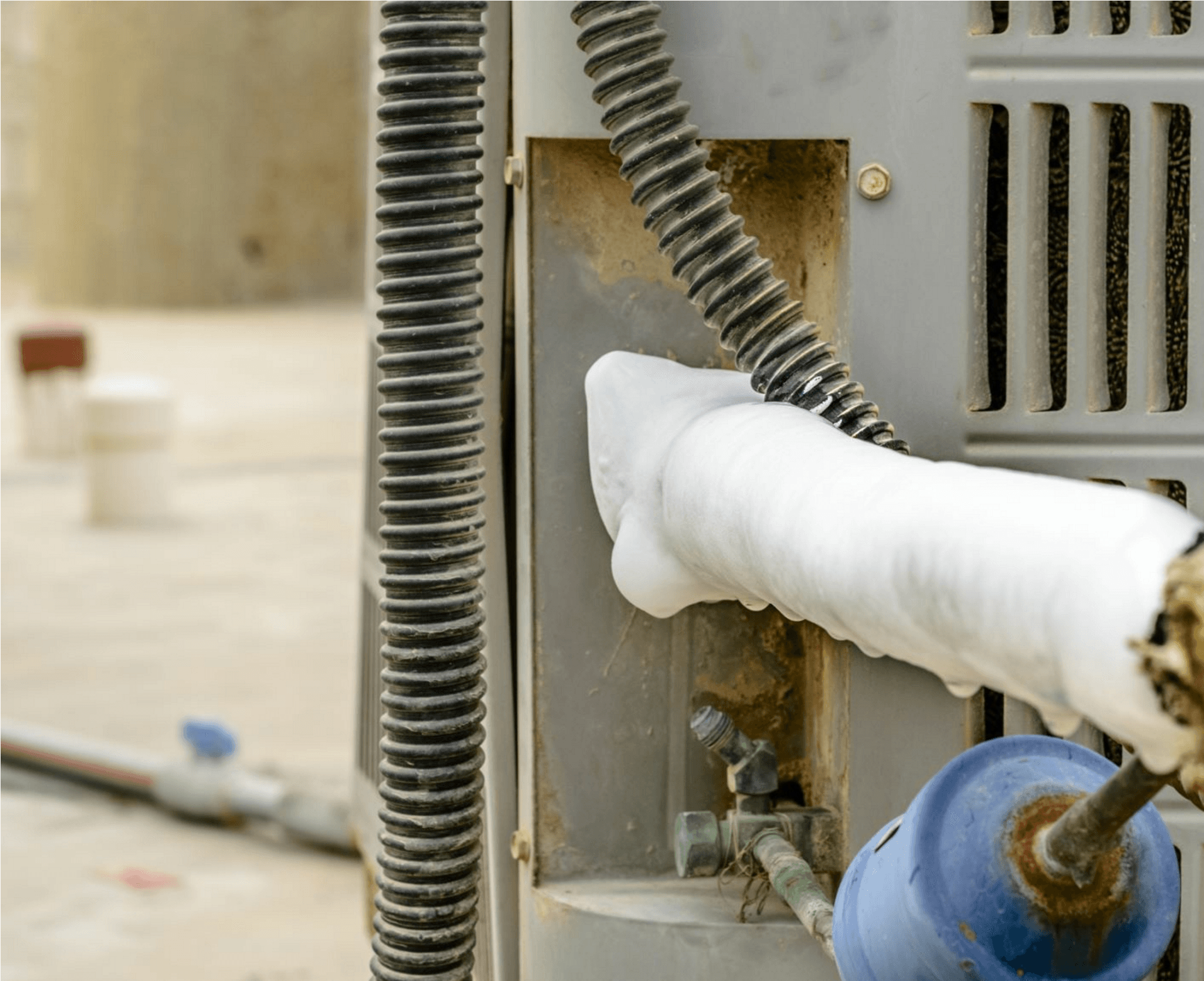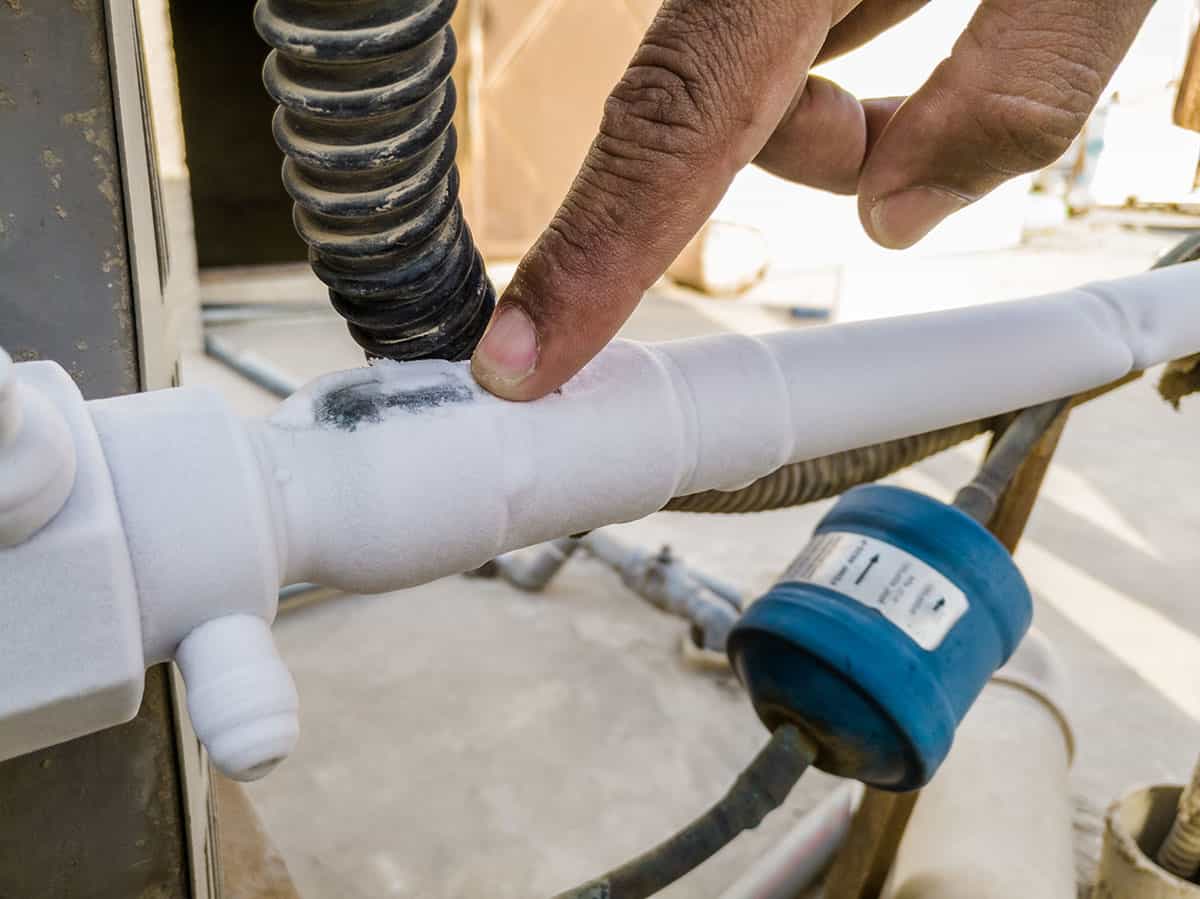Ways to Deal with a Frozen AC Pipe: Specialist Tips
Ways to Deal with a Frozen AC Pipe: Specialist Tips
Blog Article
The content following next involving What Causes AC Pipes To Freeze? is fairly enjoyable. Read it for your own benefit and figure out what you think about it.

Introduction
Uncovering that your AC pipeline is iced up can be worrying, especially throughout warm summer months when you depend on your air conditioning unit the most. Comprehending what to do in such a circumstance is critical to stop further damages to your air conditioning system and ensure your convenience inside.
Recognizing the Causes
Numerous aspects can contribute to the freezing of an a/c pipe. Recognizing these reasons can help you resolve the concern effectively.
Absence of Airflow
One common source of an icy a/c pipeline is inadequate airflow. When the air movement over the evaporator coil is restricted, it can cause the coil to drop below freezing temperature level, resulting in ice development on the pipeline.
Low Refrigerant Levels
Insufficient refrigerant levels in your a/c system can likewise result in an icy pipe. Reduced cooling agent levels can create the pressure in the system to drop, bring about the freezing of dampness on the evaporator coil.
Cold Weather Conditions
In colder climates, freezing temperature levels outside can contribute to the freezing of a/c pipelines. If your a/c system is not effectively shielded or if there are leakages in the ductwork, cool air can penetrate the system, creating the pipeline to ice up.
Dirty Air Filters
Filthy or blocked air filters can limit air movement in your a/c system, resulting in different problems, consisting of an icy pipe. It's vital to change or cleanse your air filters regularly to make certain proper air movement and protect against ice accumulation.
Signs of a Frozen Air Conditioning Pipe
Identifying the indicators of an icy air conditioning pipeline is essential for prompt action.
Lowered Airflow
If you see a considerable decrease in air flow from your vents, it could suggest a frozen pipeline.
Ice Buildup on the Pipe
Visible ice build-up on the refrigerant line or the evaporator coil is a clear indication of a frozen AC pipe.
Odd Sounds from the Unit
Unusual audios, such as hissing or bubbling, originating from your AC unit can indicate that there's ice present on the pipeline.
Immediate Actions to Take
When confronted with a frozen a/c pipe, it's essential to act promptly to avoid more damage to your cooling system.
Shutting off the air conditioner
The initial step is to shut off your air conditioner to stop the system from running and aggravating the problem.
Looking for Blockages
Examine the area around the interior device for any kind of blockages that might be obstructing air movement, such as furnishings or curtains.
Thawing the Pipe
You can use mild methods like placing towels soaked in cozy water around the frozen pipeline to assist thaw it slowly.
Preventive Measures
Taking safety nets can help stay clear of future occurrences of an icy air conditioner pipe.
Normal Maintenance Checks
Arrange routine upkeep contact a professional HVAC professional to ensure that your air conditioner system is running successfully.
Transforming Air Filters
Frequently change or cleanse your air filters to prevent air movement restrictions and preserve ideal efficiency.
Protecting Exposed Pipes
If your AC pipes are subjected to cool temperature levels, consider protecting them to stop cold during cold weather.
Looking For Professional Help
If DIY methods stop working to settle the issue or if you're unclear concerning just how to proceed, it's best to seek aid from a qualified HVAC technician.
When DIY Methods Fail
If your efforts to thaw the pipeline or address various other concerns are unsuccessful, it's time to call in an expert.
Relevance of Hiring a Professional HVAC Technician
A licensed HVAC service technician has the know-how and tools required to detect and repair issues with your AC system safely and successfully.
Final thought
Taking care of an icy AC pipeline can be a frustrating experience, yet recognizing exactly how to react can assist reduce damages and bring back comfort to your home. By comprehending the causes, identifying the indicators, and taking timely action, you can efficiently deal with the problem and avoid future occurrences.
What to Do If Your AC Line Is Frozen
Make Sure All Supply and Return Air Vents Are Open
If you notice problems with airflow, the first thing you should do is check your supply and return vents. Supply vents distribute clean, conditioned air throughout your home. As this air becomes stale, it’s pulled into the return vent, where it’s reconditioned before being sent back out through the supply vent.
When these vents are closed, air won’t flow in the home. Before examining your AC, check the vents in every room and ensure they’re all open.
Check for a Dirty Air Filter
Another possible cause of limited airflow is a dirty air filter. Your air conditioner’s filters catch elements you don’t want to breathe in, such as dirt and dust. Over time, filters can become clogged, ultimately blocking air from flowing in and out. The lack of airflow can then cause the entire coil to freeze and will completely restrict any air from moving through it. The AC may need to be powered off for one to two days to allow the coil to thaw after replacing the filter to allow proper functioning of the unit. This debris can also accumulate on your AC’s evaporator coil, requiring a more serious repair. In general, air filters should be cleaned regularly (about every two weeks).
Assess Your Outdoor Unit
In addition to checking your AC, assessing the outdoor unit is a good idea. Also known as the condensing unit, it works with your interior unit to release heat outside. An issue with the outdoor unit can result in rising internal temperatures.
Overgrown Shrubs or Clogged Leaves
From leaves and twigs to shrubs and debris, there’s no shortage of outdoor elements that can accumulate around your condensing unit. When these elements get lodged inside the unit, they can block airflow. Fortunately, removing the blockage can solve the problem.
Sounds of a Broken Fan
Shrubs and leaves aren’t the only things that can impede your outdoor unit’s airflow. If the fan is broken, the unit won’t be able to properly get rid of heat — which means the internal temperature won’t go down. First, make sure the fan is spinning. If it is, check for the following sounds of a broken fan:
Buzzing Rattling Screeching Hissing Clicking Preventative Measures
Nobody wants to deal with a frozen AC line. In addition to causing problems with your air conditioner, they require professional repairs. On the bright side, there are preventative measures you can take to help ensure this issue doesn’t arise in the first place.
https://www.coopergreenteam.com/blog/what-to-do-if-ac-line-frozen

We had been shown that report about Air Conditioner Frozen? How To Fix your Frozen AC Line through a good friend on another site. Those who appreciated our blog post please make sure you remember to pass it around. Thank you so much for going through it.
Call Today Report this page